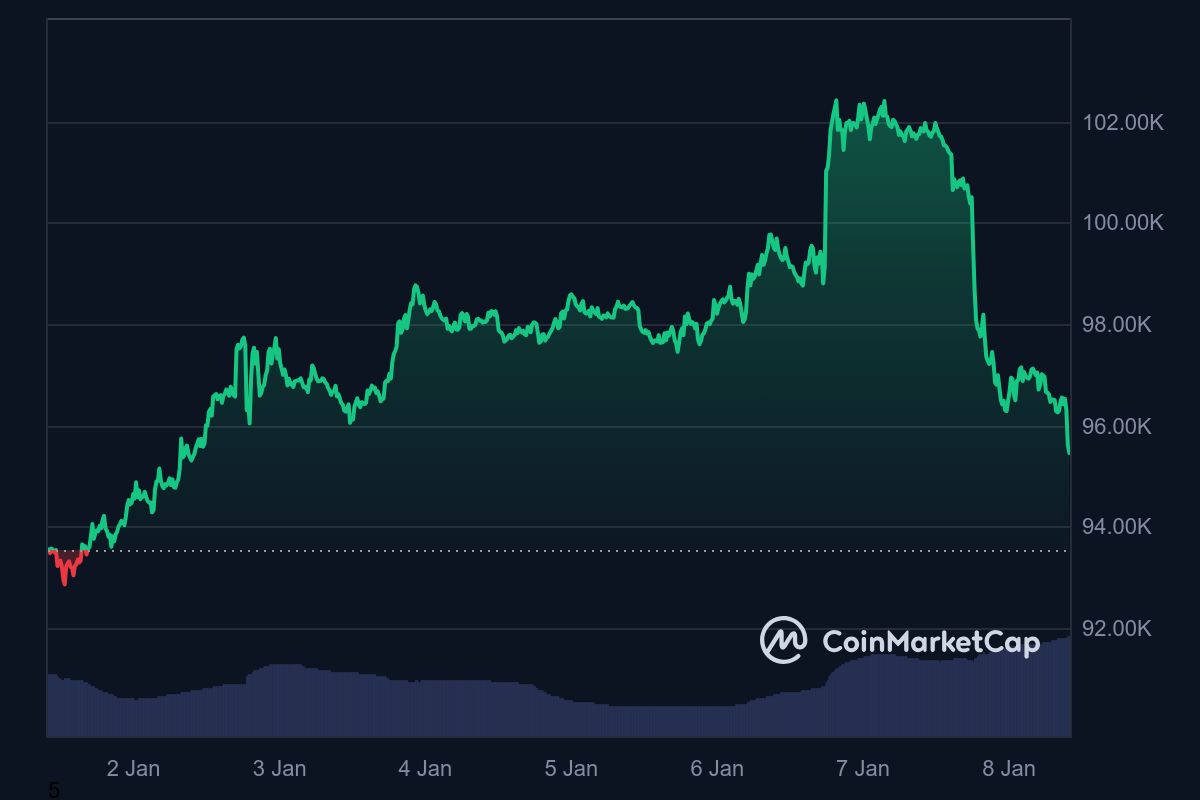Bitcoin (BTC)  $86,354 saw a significant downturn this week, dropping 5% to $95,400 after surpassing the $100,000 mark. The leading altcoin, Ethereum (ETH)
$86,354 saw a significant downturn this week, dropping 5% to $95,400 after surpassing the $100,000 mark. The leading altcoin, Ethereum (ETH)  $1,611, experienced an even sharper decline, losing 8.5% in the last 24 hours while struggling to maintain a price above $3,300. Other prominent altcoins like Dogecoin
$1,611, experienced an even sharper decline, losing 8.5% in the last 24 hours while struggling to maintain a price above $3,300. Other prominent altcoins like Dogecoin  $0.158842 (DOGE) and Avalanche (AVAX) also faced losses exceeding 10%.
$0.158842 (DOGE) and Avalanche (AVAX) also faced losses exceeding 10%.
Fed’s Monetary Policy and Inflation Concerns Impact Market
Market optimism earlier this week had briefly boosted Bitcoin and Ethereum prices. However, recent data from the U.S. economy led to a sell-off in both cryptocurrency and traditional markets, according to Presto Research analyst Min Jung. Jung noted that the NASDAQ and S&P 500 also suffered declines of over 1%, indicating broader market concerns.

The data suggested that the U.S. economy is growing faster than expected, raising fears of persistent inflation and increasing bond yields. BTC Markets analyst Rachael Lucas pointed out that investors anticipate the Federal Reserve (Fed) will maintain high interest rates for an extended period, contributing to market volatility.
Markets Await Trump’s Inauguration
With Donald Trump’s inauguration set for January 20, markets expect continued fluctuations. Lucas emphasized that the new administration’s policies regarding cryptocurrencies will be closely monitored, particularly with a pro-crypto majority in Congress and the appointment of Scott Bessent as Treasury Secretary. Additionally, Elon Musk‘s advisory role will also be a focal point in the sector.
Investors are currently focused on important economic reports expected in January, especially the Consumer Price Index (CPI) data scheduled for release on January 15, which may provide crucial insights into the Fed’s monetary policy and inflation risks. The non-farm payroll figures and Fed meeting minutes to be released this week could also be pivotal in determining market direction.
The CME Group’s FedWatch tool indicates a 95.2% probability that the Fed will keep interest rates steady at 4.25-4.5% during the meeting on January 29. Analysts believe this expectation is contributing to increased market volatility.

 Türkçe
Türkçe Español
Español








